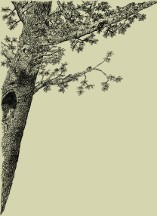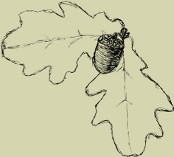42 41 40 39 38 37 36 35 34 33 32 31 30 29 28 27 26 25 24 23 22 21 20 19 18 17 16 15 14 13 12 11 10 9 8 7 6 5 4 3 2 1
Zeszyt 23 (1992)
Results of infrared spectroscopic studies on holocellulose and lignin preparations taken from wood of different kinds and degree of degradation were presented.
It was found that holocellulose taken from pine and beech wood, cooked in NaOH is highly deacetylated. Also the 30-70% increase in degree of oxidation of pine and beech lignin from the wood cooked in NaOH and pine lignin from the wood decomposed by fungi was noted.
Samples of Scots pine wood coming from forest stands damaged to a various degrees by industrial air pollution were investigated. It was proved that the specific gravity of wood decreases when the stand damage by industrial emissions increases. The proportion of late wood, diameter increment in 10- and 20-years long periods, number of annual rings per 5 cm of sample length as well as the length of tracheids of early and late wood do not change significantly under the influence of industrial air pollution.
Beech wood Fagus sylvatica L. test samples were decayed by white-rot fungus (Fomes fomentarius) and brown-rot fungus (Deadalea quercina). After 2, 4, 8 and 12 weeks of fungal exposure changes of mass loss and compressive strength were determined. This widely used decay evidence were compared with changes of chromatic constituent of wood colour using colorimeter MON COLOR D.
Results indicated significant regularity in relation between tested parameters.
Data concerning cutting resistance in the case of slicing of the black locust, published so far, are far from complete. For this reason it seems advisable to investigate this parameter.
The results of studies on the cutting resistance in the case of slicing of the black locust are included in this paper. The results were presented in the form of a dependence of cutting force Ps/b, thrust force Po/b and specific cutting energy on chip thickness g for chosen cutting angles.
Investigations were carried out on the defibration of the pine wood in a low frequency ultrasonic field. The highest defibration dynamic was observed during the two first hours of the sonication. The predominant effects of ultrasound treatment are: fibrillation of the external wood parts and deterioration at the middle lamella region.
The investigations of the influence of the ultrasonic treatment in acid and alkaline media on lignin and carbohydrate content in wood were carried out. In both studied media lignin was the wood component the most susceptible to the degradation. Cellulose was resistible to the insonation and noncellulosic polysaccharides showed only partial degradation.
The presented paper reports the results of investigations of acoustic emission (AE) events generated in the drying process of pine wood samples of various length which initial moisture content was close to the fiber saturation point. The maximum in AE events count rate are correlated with the maximum in the restrained wood shrinkage, so occurs when dessorptive stresses reach the highest values.
Radial variation of the vessel lumen diameters and vessels density was investigated in sessile oak wood from dominant, intermediate, and suppressed trees. With the rise in age of growth rings, especially in the core zone of stem cross-section, the vessel diameters and late vessels density increases, but the early vessels density decreases. The results of measurements of he variation of conductive elements in oak wood indicate that juvenile (core wood) of the trees involves about 30 growth rings. Decrease of the conditions of tree growth in a stand causes lowering of the vessel lumen diameters and rise in vessels density.
A variation in the total transsection area of walls in a single radial row of tracheids as well as the dependence of the transsection area of walls of single tracheids on the cambial age of growth rings and on the tree growth rate in a 52-year even-aged pine stand were determined. The total area of transsection walls of tracheids ranges from 77⋅103 µm2 in the outer rings of the stem. This value changes with the cambial age of the growth ring according to a negative exponential curve. Due to the worsening of the conditions of tree growth in a stand, the total area of transsection of walls in a single row of tracheids for a given growth ring increases. There is a linear dependence between the total area of transsection of walls in a single row of tracheids and the number of tracheids in the growth ring. The mean area of transsection of walls of a single tracheid is constant within ±10%, irrespective of the type of tracheid (early or late), of the tree growth class, and of the zone of the stem cross-section.
Chlorhormidium flaccidum and Chlorococcum lobatum algae were isolated from wood surface and incubated under laboratory conditions in liquid mineral medium. The test pine and beech samples were exposed to the pure colony of those microorganisms. After three months of algal activity, wood was examined with light and scanning electron microscopy. The ability of growth of algae into wood and ability of growth though pits was proved. Despite the lack of absolute evidence of degradation of wood structure by algae this possibility can not be ignored.
Effect of various species of wood on the curing reaction of phenolic resin were examined by means of differential thermal analysis (DTA) to evaluate the activation energy (Ea) of this process. It was found that all wood species decrease Ea in comparison to Ea of unfilled resin. Based on the values of Ea the species of wood may be divided into three groups.
Ten-year investigation with the Synpregnit CBZ and Pentor 70 wood preservatives carried out in field test of the Warsaw Agricultural University (at Rogów) and the Poznań Agricultural University (at Murowana Goślina) are presented. Two dimension stakes of the beech and Scots pine wood impregnated with different concentration of both preservatives taken by vacuum-pressure method were applied.
Instrumental measurement of the modulus of elasticity as well a visual-manual estimation of the infestation and destruction degree were assumed as an estimation efficacy criterion. The protection efficacy in time was expressed in years, in which the infestation degree did not exceed 25 in the decay scale, while the module of elasticity decrease was less than 50% in relation to the value of control samples. The comparison of the methods applied was performed.
The results of investigation on the estimation of efficacy of wood protection were presented. Pine and spruce wood were impregnated with the water solution concentration 1.0, 2.5, 5.0 and 10.0% of the “BS” preservative. The depth of penetration was determined by the coloric reagent method; efficacy of wood protection by the bioisotope method. The results obtained by both methods are comparable.















 Pobierz PDF
Pobierz PDF